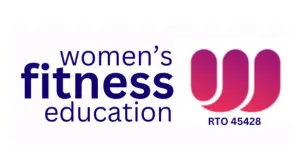Women's Fitness Blog

The Rise of a New Era in Fitness: Catering to the Post-Pandemic Baby Boom
The Baby Boom Phenomenon
The fitness industry is experiencing an unprecedented influx of pregnant women and new mothers. In Victoria alone, an additional 1,400 babies were born between April and August 2023, reflecting a trend across all states. This baby boom, propelled by a 22% increase in newborn deliveries reported by HCF, contrasts with the dip in births in 2020. Fitness professionals must ask themselves if they are ready to support this burgeoning demographic.
Educational Gaps in Fitness Training
While periodically reviewed, the standard Certificate III and IV in fitness qualifications fall short in preparing trainers for the specific needs of the pre and postnatal periods. The content currently overlooks critical topics such as trimester-specific training adjustments, post-birth DRAM assessment, empathetic client engagement following pregnancy loss, and essential health inquiries related to childbirth and mental well-being.

What is DRAM?
Diastasis Recti Abdominis Muscle (DRAM) is a condition that occurs when the rectus abdominis muscles, commonly known as the 'six-pack' muscles, separate along the midline of the stomach. This separation is often a result of the abdominal muscles stretching and thinning to accommodate a growing uterus during pregnancy. It can lead to a bulge or 'pooch' in the stomach area and is most noticeable when the muscles are tense, such as when coughing or sitting up.
DRAM can affect a woman's core strength and stability, potentially leading to back pain and pelvic floor dysfunction. Recognising and appropriately addressing DRAM is crucial for postnatal recovery and long-term abdominal health. Fitness professionals need to understand how to modify exercises for clients with DRAM to prevent exacerbation and aid in recovery.
Special Populations... or is it?
The small amount of information dedicated in the current Fitness qualification to pregnancy and postnatal can be found under a title called "Special Populations." Women currently comprise approximately 51% of the population, so it is difficult to reasonably conclude that this population is "special."
This deficiency points to a pressing need for a curriculum overhaul that includes these vital elements. However, this will also be difficult when only 6% of sport and exercise science studies from 2014 to 2020 were conducted exclusively with female participants.
Failing to address women's health in fitness training creates a knowledge gap and inadvertently contributes to a broader societal issue. By identifying women's health as a "special population", the industry perpetuates the marginalisation of women's specific health needs, fuelling a movement for change and inclusivity.

The Imperative of Adequate Systems and Confidence
Integrating structured systems for client induction and initial assessments is a challenge that fitness professionals must overcome to accommodate the needs of women. Furthermore, building the confidence to delve into sensitive but necessary topics with clients is key. This is about providing a service and ensuring safety, care, and a professional duty to support clients through their unique fitness journeys.
Here is a list of questions that you can integrate into your initial consultation when a new or existing client tells you that they are expecting:
For Pregnant Women:
What trimester are you currently in?
Have you experienced any complications or been given any specific exercise restrictions by your healthcare provider?
How has your health and fitness routine changed since becoming pregnant?
Are you experiencing any pregnancy-related discomfort, such as back pain or pelvic girdle pain?
What are your current energy levels like, and how much rest are you getting?
How do you feel during and after exercise?
What are your fitness goals during pregnancy?
For Postnatal Women:
How long has it been since you gave birth?
Did you have a vaginal delivery or a cesarean section, and were there any complications?
Has a pelvic health physiotherapist checked your pelvic floor and abdominal muscles post-birth?
Are you experiencing any pain, discomfort, or incontinence?
What was your level of physical activity before and during pregnancy, and what is it now?
How are you managing the physical demands of caring for your baby?
Are you currently breastfeeding, and have you noticed any impact on your physical activity?
What to Do with the Answers:
Customise Training Programs: Use the information to tailor workouts that accommodate the specific pregnancy or postnatal recovery stage, ensuring exercises are safe and beneficial.
Refer to Specialists: Having a professional relationship with a pelvic health physiotherapist will make it easier for your client to undergo a comprehensive assessment. They will also be able to best guide you in her post-birth recovery.
Monitor and Adjust: Regularly check in with the client to monitor their comfort and response to the exercise program, making adjustments as necessary to align with their changing needs and any advice from their healthcare team.
Educate: Inform the client about the importance of listening to their body, the signs to look out for that may indicate they need to slow down or modify their exercise, and the typical recovery processes for postnatal women.
Support and Empower: Provide support and encouragement, helping clients set realistic goals and celebrate progress while reinforcing the importance of rest and recovery.
Document and Communicate: Keep detailed records of client responses and program modifications and maintain open communication with other healthcare professionals involved in the client's care.

Fuelling a Movement for Women's Health
By acknowledging and prioritising women's health in fitness, professionals can play a pivotal role in fuelling a movement towards a more inclusive and supportive fitness industry. This movement transcends mere service provision; it's about advocating for and safeguarding the well-being of every woman who steps into the fitness realm, especially during the transformative phases of pregnancy and postpartum.
In essence, the post-pandemic baby boom is not just a temporary trend; it's a clarion call for the fitness industry to evolve, expand its knowledge base, and actively contribute to a movement that champions women's health and fitness needs as an integral part of its service offering.
PS: If you're thinking of becoming a Personal Trainer - check our Certificate III and IV in Fitness!
Connect with Mish
Facebook: https://www.facebook.com/fbmish
Instagram: https://www.instagram.com/mishfit/
LinkedIn: https://www.linkedin.com/in/mishfit
